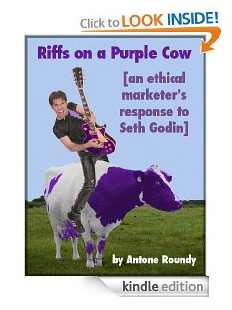What Drives Word of Mouth Advertising?
by Antone Roundy | Add Your Comments | Viral
If you can get it, word of mouth advertising is the most powerful form of advertising. It's delivered by trusted advisors (a.k.a. friends), and costs you nothing.
But attempts to intentionally ignite viral marketing campaigns usually fall flat on their faces. Why? And what can you do to improve your odds of success?
A few days ago, David Aaker posted an article on his Harvard Business Review blog about research from 1966 into people's motivations for talking about brands:
The first (about 33% of the cases) is because of product-involvement. The experience is so novel and pleasurable that it must be shared. The second (about 24%) is self-involvement. Sharing knowledge or opinions is a way to gain attention, show connoisseurship, feel like a pioneer, have inside information, seek confirmation of a person's own judgment, or assert superiority. The third (around 20%) is other-involvement. The speaker wants to reach out and help to express neighborliness, caring, and friendship. The fourth (around 20%) is message-involvement. The message is so humorous or informative that it deserves sharing.
So the #1 key for viral marketing success is to create products so exceptional, that people can't help but talk about them.
Not an easy task. And with some types of products, perhaps not even possible. You may have created the most extraordinary paper clip in the known universe, but that doesn't mean anyone's going to tell their bar buddies about it.
That's because it's not so much about the product as about the experience of using the product. When you're brainstorming to come up with a killer feature for your next version, think not just about what you can make your product do, but how you can enhance the experience for the user.
The #2 key, enhancing the stature of the user, has Apple written all over it. Maybe not every body envies Mac users, but Mac users certainly think they do, or should. (I'm a Mac user, so I can say that). After the iPod came out, everybody wanted white earbuds, even if they didn't have an iPod connected to them, because that's what the cool people with the cool MP3 players had. And if you got an iPhone before everyone else, you were guaranteed to become the center of attention (or at least your phone was).
During the Harvest of Harmony parade here in Grand Island, Nebraska, last summer, I remember seeing some incredibly fancy farm equipment -- these huge, uh, tractors (you can tell I'm not from around here, since I don't know what they're really called) that looked like something out of Star Wars.
Why on earth, I thought, would you build something so curvy and shiny when you know that it's going to end up slogging though the mud the moment it gets driven off the lot? Well, I guess even farmers would rather being flying a spaceship than putting around on a dumpy looking tractor.
If you don't think your product has a sexy side, just remember the space tractor, and then think about it a little harder.
Skipping over #3, it's interesting that humorous or informative messages were the least powerful of the four motivations that the study found. I'd imagine humor is also the least powerful at getting those who hear word of mouth advertising to buy.
Maybe that's why manufactured viral campaigns fail so often -- they're built on the least potent weapon, because it's the most accessible.




